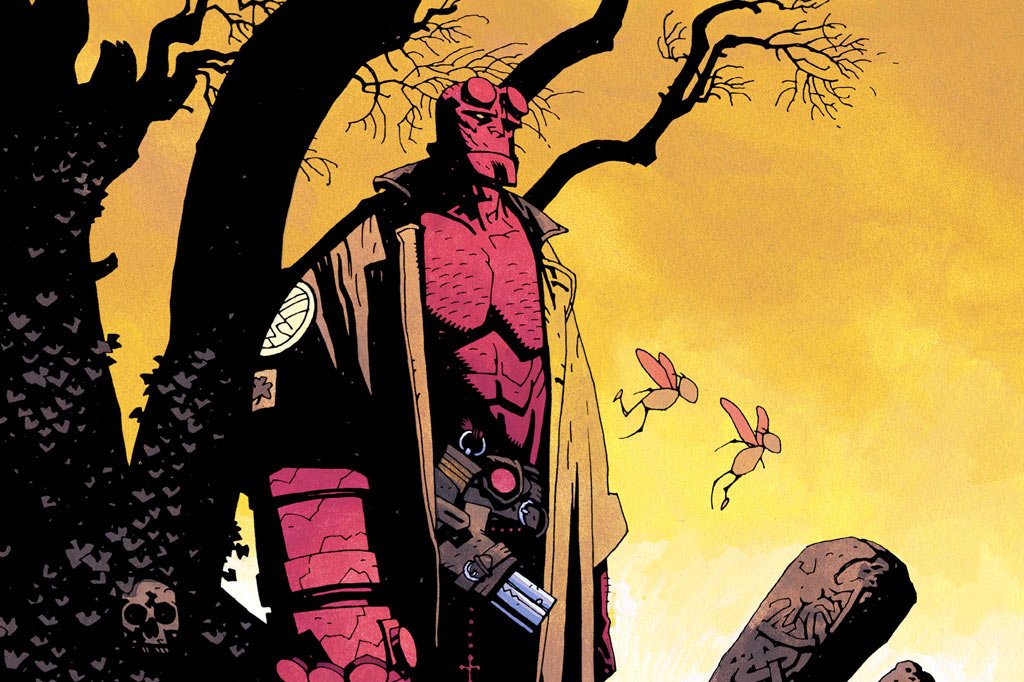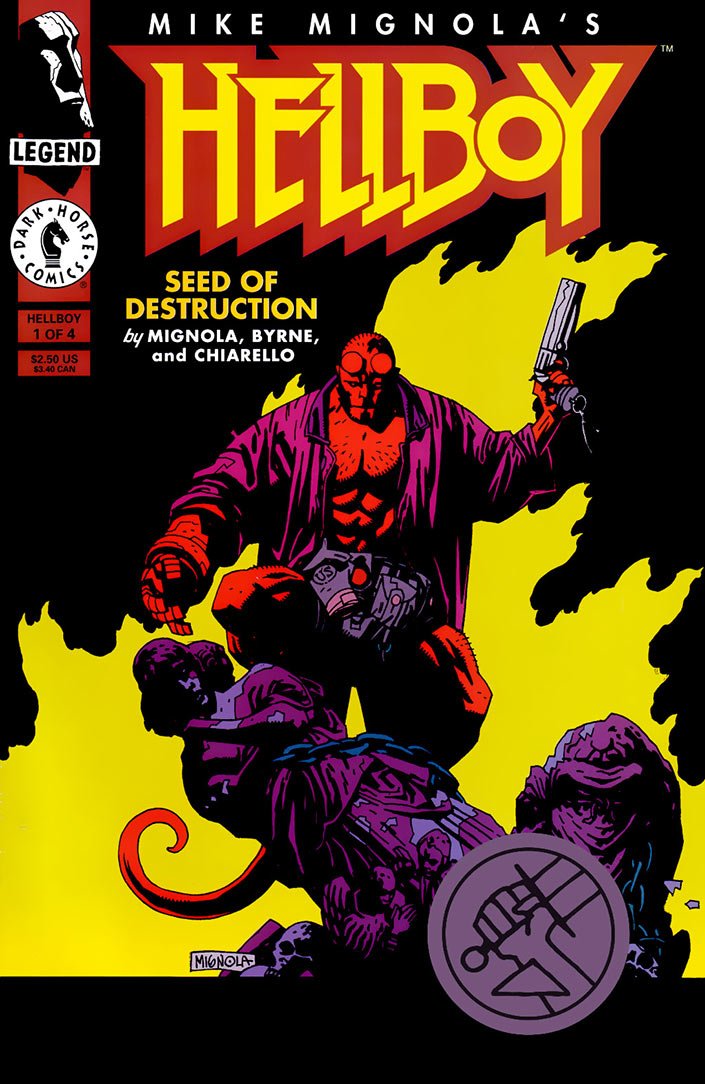
Mike Mignola was getting known for his work for Marvel and DC, but it was not what he especially desired to draw. What he wanted to do was stories about an occult detective and did it with Hellboy.
This was in 1993. Mignola had finished his now-celebrated comic adaptation of the Bram Stoker’s Dracula movie that helped him continue to explore themes and historical elements he was really into—like did his (DC Elseworlds) Gotham by Gaslight story just before. For his next work, he wanted to do a created-owned book and, at first, he intended to keep going in that same direction, inspired by stories written by William Hope Hodgson (Carnacki), Alice & Claude Askew (Aylmer Vance), H. Heron (Flaxman Low), A.M. Burrage (Francis Chard), and more. But after being confronted with the challenges of drawing Victorian-era stories, he kept his occult detective concept and chose another time period.
The idea of the big red monster was inspired by a drawing he made a couple of years earlier for a pamphlet to help promote the Great Salt Lake Comic-Con. It was not the Hellboy we know now, but a demonic monster with the word “Hell Boy” on his belt. That name was what the artist kept in mind as the design of the character evolved seriously and transformed into a more human creature—still, he was a red-skinned, cloven-hooved demon with a big gun.
What Mike Mignola wanted was not to get bored with his creation—that’s why having a monster as the protagonist appealed to him, and clearly to a lot of readers. The drawing was one thing, writing was another, and the artist was not as confident with his typewriter as he was on his drawing table. To help him, he asked veteran John Byrne to script Hellboy’s first (4 pages) story that was going to be published in San Diego Comic-Con Comics #2, a comic that Dark Horse gave away during the 1993 SDCC.
After that, Hellboy made an appearance in Byrne’s own Next Men comics (#21). Three months later, the first issue of the Hellboy: Seed of Destruction miniseries hit the stands. Mignola took charge of the writing and thought this was going to be the only Hellboy series. But it was an instant success and fans wanted more of this Lovecraftian horror-style tale. Soon after came “The Wolf of St. August” story in the pages of the anthology series Dark Horse Presents, and two Eisner awards—the “Best Writer/Artist” Award and “Best Graphic Album: Reprint” Award in 1995.
Thirty years later, there are still new Hellboy stories being published—take a look at our Hellboy Universe Reading Order for a full list. So it worked a lot better than expected as the character opened the way for a big universe of series, invaded the big screen, and more.
The Fictional Origins of Hellboy
On December 23, 1944, on Tarmagant Island, off the coast of Scotland, the “Mad Monk” Grigori Rasputin and his Nazi occultist collaborators organized a summoning. What they bring from Hell was a half-demon boy named Anung Un Rama (meaning “and upon his brow is set a crown of flame”). This son of the archdemon, Azzael, an Archduke of Hell, and the human woman Sarah Hughes was conceived in 1574 and, when the mother tried to repent for her sins, the father brings her to Hell and the baby was born. Then Azzael cut the right hand of the newborn and replace it with the “Right Hand of Doom”—this relic is the key to releasing the Ogdru Jahad, a cosmic entity that could destroy the Earth.
The summoning was interrupted by a team assembled by the Allied Forces that included Professor Trevor Bruttenholm. He decided to keep the boy, naming him Hellboy and bringing him to the United States. The Professor founded the Bureau for Paranormal Research and Defense (B.P.R.D.) in order to fight against dark forces including Nazis, witches, vampires, and all types of monsters—most of them finding their roots in folklore and all types of horror stories.
Hellboy grew up in the B.P.R.D. and became one of his most successful agents, the “World’s Greatest Paranormal Investigator,” working next to amphibian humanoid Abe Sapien, pyrokinetic Liz Sherman, and Professor Kate Corrigan among others.
When the series began, Professor Bruttenholm disappeared during an expedition in the Arctic. Hellboy found him just in time to see him die. His investigation to understand what happened led Hellboy to face Rasputin who wanted to push him to embrace his destiny. This Destiny, Hellboy will do everything to avoid it—and you’ll need to read the series to learn if he succeeds or not.
